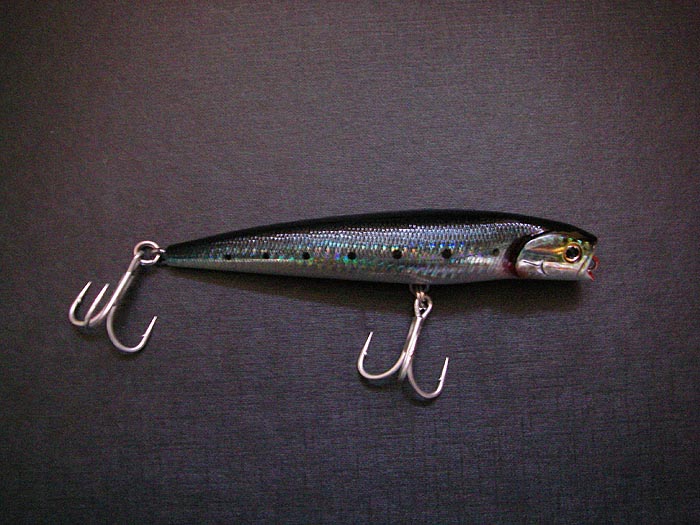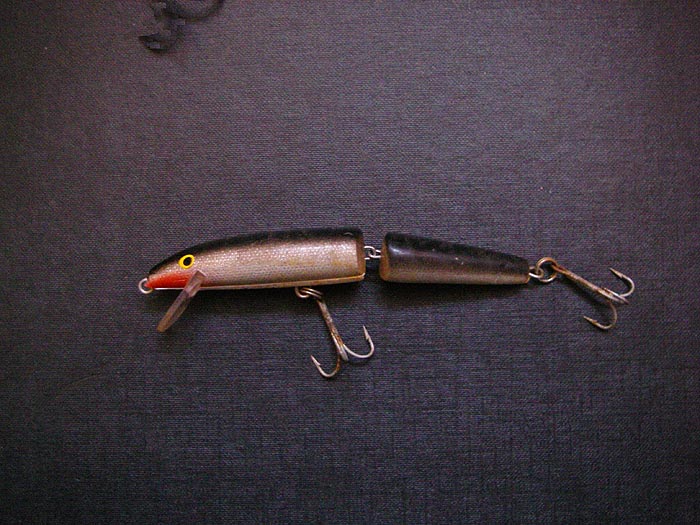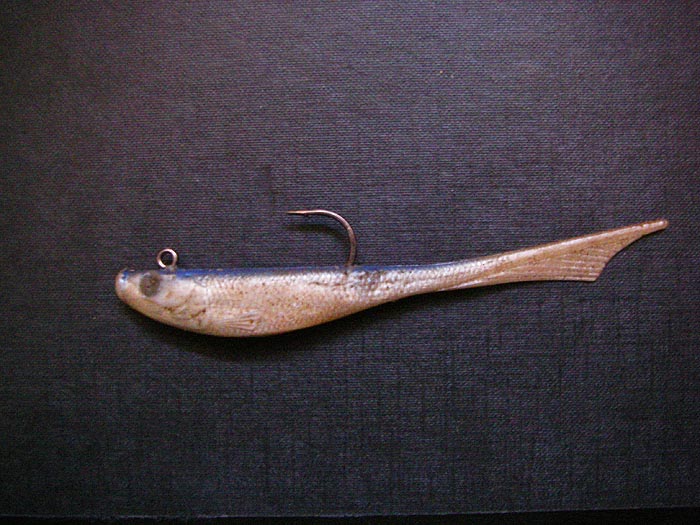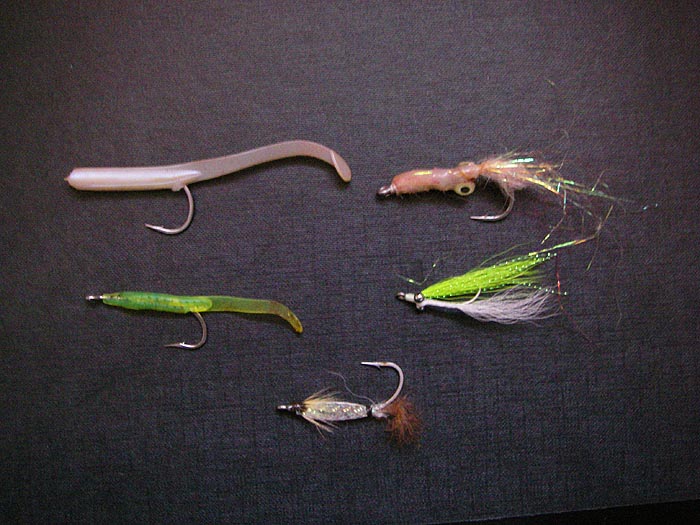 '
'Information Page.
How good is your fly/lure?
20 May 2009
A recent email from David Corbett made me think about something that must cross the minds of most anglers from time to time. Just how attractive to fish are the artificial flies and lures that we use? First David's email just to set the scene -
Hi Mike,
Reading your story of the seal (Saltwater page 269) made me wonder if you ever worried about something other than a fish taking your lure.
I was fishing from a beach in South Devon using a light spinning rod, braid and a popper, hoping to tempt a bass onto my hook. I had just cast as far as I could and was watching my lure arcing down to the water when something caught my eye. A juvenile seagull flew into view from my left, it saw my popper splash into the water, then turned and dived down in pursuit of what it thought was food. I tried to pull the lure away at the last moment but the agile young bird was too quick. It picked up my lure and took off!
After a brief moment for jaw hanging, there followed a good deal of flapping, noise and cursing of luck. Happily all ended well, with the aid of a fellow fisherman and helped by the fact that I always squash the barbs on my hooks. After having the hook removed but before being released the seagull did show his gratitude by giving my finger a sharp peck. Even though there were no other birds in sight, I swapped the lure for some feathers and had mackerel for breakfast instead.
David Corbett
I think that David's reaction is exactly the same as the rest of us, the last thing we want is for a gull or a cormorant or a seal or a dolphin to take the lure intended for a fish. The fact is that David was surprised by the bird taking the popper and this is because it's quite a rare thing to happen. Over a lifetime of fishing I can only recall a handful of such events while in the same period the fish I've caught on flies and lures number in the tens if not hundreds of thousands. What is this telling us?
First a few examples. I remember when I was a youth a dolphin stripping the feathers off my pal's handline and nearly pulling him over the side of the boat in the process - the animal may not have taken the feathers of course, in this rare case it could have simply bumped into the line in pursuit of mackerel. I've had the very occasional gull threaten to grab a shallow diving or surface lure, I've had a bat take a dry fly in mid-air and I once landed a guillemot on a Rapala (the tail hook was just resting in it's beak and fell out as I picked the bird up). These events and one or two others are the sum total despite the millions of feathered and furry fish eating predators that have had a chance to cast a beady eye over my artificials.
Looking at it from another point of view, I often watch terns fishing in the places that I am casting to (of course the presence of the birds is the reason I'm fishing there). Sometimes the sharp eyed little birds deviate to have a glance at the lure but then they fly on, mostly they ignore it. The same applies to all the other obvious fish eaters that I see - countless grebes, mink, otters, seals, terns, gulls, gannets, boobies, noddys, darters, razorbills, guillemots, puffins, cormorants, pelicans and the like have disdainfully ignored my imitation fish. Why?????
Clearly these creatures CAN TELL THE DIFFERENCE between a real sandeel, sprat, mackerel or what have you and my carefully chosen, artistically crafted and cunningly presented lure or fly. I look at my artificial as it 'swims' towards me and think "That's really fishlike!" but clearly IT ISN'T. Let's face it, to animals for which it is literally a matter of life and death to distinguish real prey from 'simulations' in the form of drifting debris or swirling weeds, our bunches of feather and fibre and our plastic or metal spindles are NOTHING LIKE THE REAL THING! Only the young, inexperienced or mentally defective gull etc. is likely to be deceived by our skilfully manufactured imitations.
Where does this leave us? We certainly catch a fair number of fish on flies and lures so they do work - up to a point. Is it just the stupid or naive fish that are conned by our artificials? Probably! However, I expect that because fish live in relatively murky water they cannot depend totally on their eyesight to recognise prey so the appearance of the lure is not so important. Movement, flash, vibration, disturbance, scent and taste are probably much more critical triggers for assisting location and prompting attack. Nevertheless, because it really is a matter of 'life and death' to them MOST FISH WILL JUST RECOGNISE OUR CREATIONS FOR WHAT THEY ARE AND IGNORE THEM. It's a hard thing to swallow that the huge amount of effort we devote to fashioning flies, painting plugs and shaping spoons is largely wasted. The fact that we have generated so many subtle variations of shape, colour and form in the fibre and plastic creations suggests that it is not too important exactly which you use. Experience seems to confirm this.
If you read the books and magazines you get the impression that switching from a fluorescent shrimp to an incandescent crab did the trick - this, is seems to me, is usually because the writer couldn't come up with anything else to write about. I suppose that there is a sort of vanity in thinking that our choice of a 'chartreuse Clouser', a 'Fire Tiger Rebel' or a 'Sky Blue Pink Shad' is the reason for us catching a fish. It's much less satisfying to imagine that the fish equivalent of 'the village idiot' just happened along. You will find that successful anglers are generally much more reluctant to change flies or lures than novices. In general, a few basic lures or flies, fished with thought and worked well, will outfish the contents of the biggest fly box or a suitcase full of the latest plugs, poppers and paraphernalia. By all means collect these gadgets if you like them but I think that a little bit of thought and effort put into your fishing is likely to be vastly more productive than any amount of money spent on the latest lure fad.
If you have any comments or questions about fish, methods, tactics or 'what have you.'get in touch with me by sending an E-MAIL to - docladle@hotmail.com
Large popper.
 '
'J11.
 '
'Soft rubber.
 '
'Flies.
 '
'